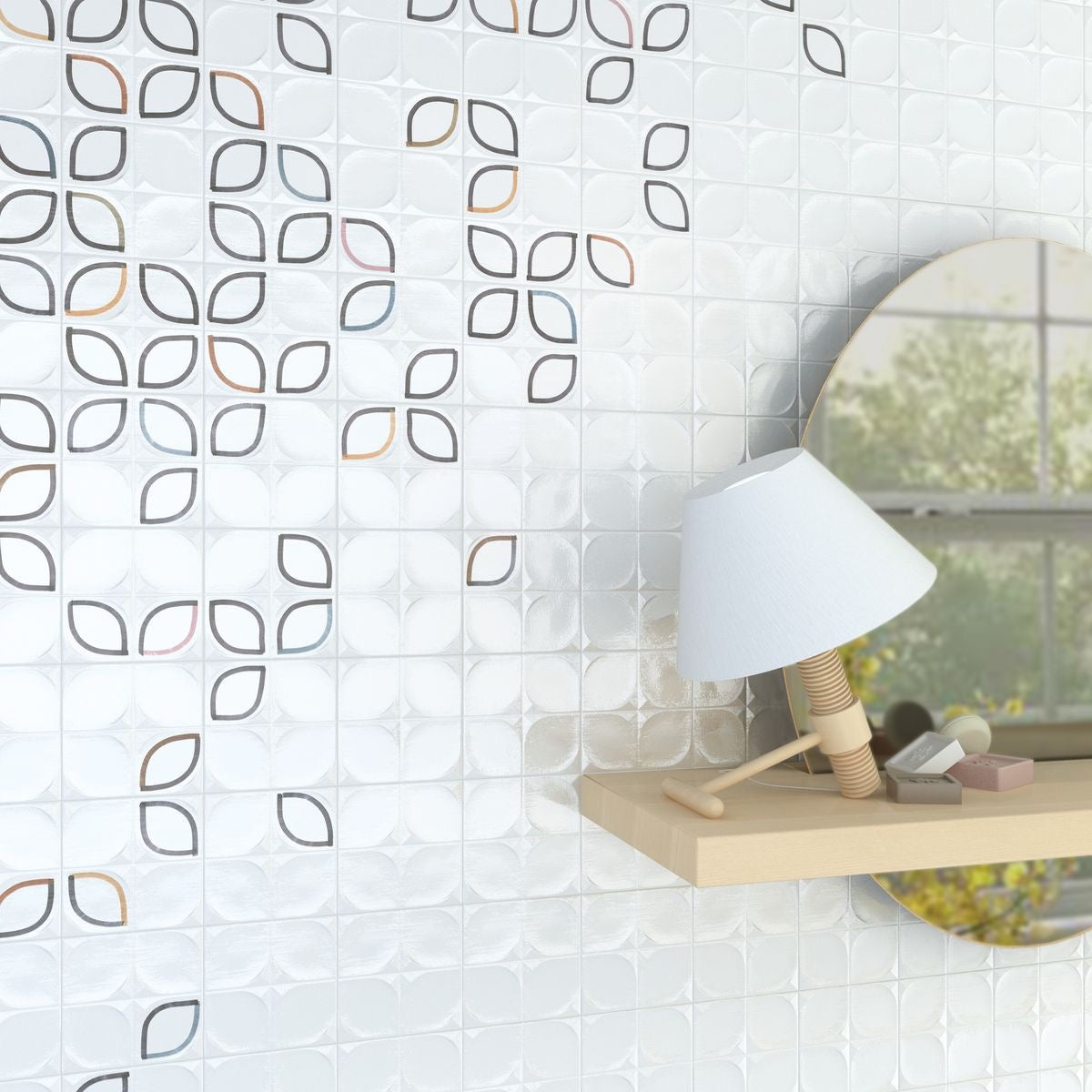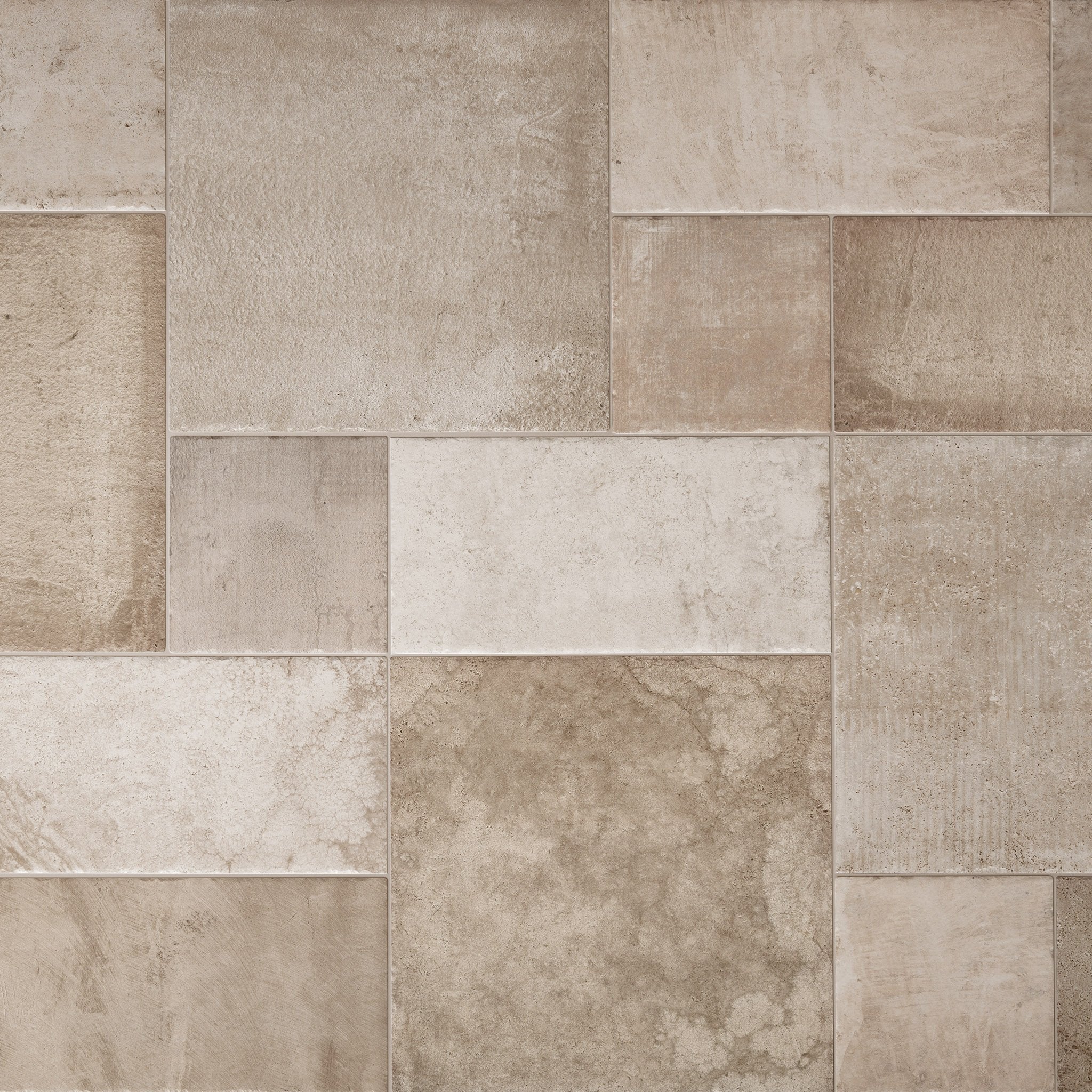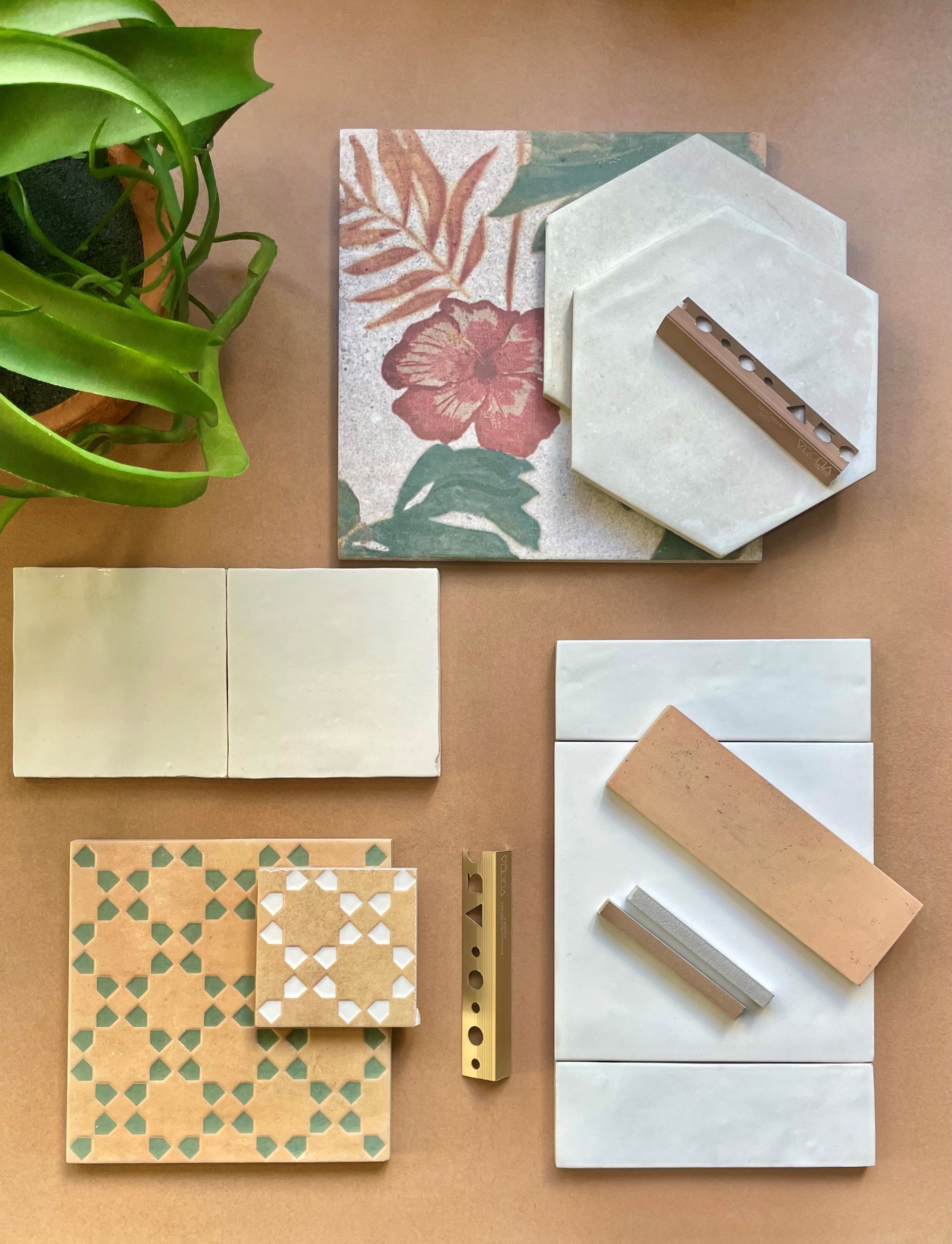I think one of the questions I am asked more than any other is, "What tiles should I buy?" This has prompted me to create our top guide to choosing tiles for your home.....or commercial project come to think of it.
Firstly you need to understand the different type of tiles that are on the market. So here we go, this is our uncomplicated, straight talking guide to tile types.
Ceramic tiles.
This type of tile has been made for centuries, it's made from a ceramic biscuit (base) and generally has a glaze applied to the surface that adds, pattern and colour to the product.

Almost all wall tiles are ceramic and up until fairly recently most floor tiles were also made of this type of biscuit, but more recently they have been super-seeded by porcelain tiles. Ceramic floor tiles have been used for a very long time, but they are softer than modern porcelain tiles, that said it's really difficult to create a hand formed looking tile from porcelain, so many tiles like our Tuscany floor tile will always be made from ceramic.
Porcelain tiles.
A more recent invention (well 15-20 years) porcelain is less porous than ceramic and has a harder wearing body than a ceramic tile. It can be unglazed and have a through colour body, or can be glazed with a number of decorative finishes. A glaze doesn't have to be shiny, by the way, many matt finished tiles are also glazed. A glazed product if often easier to clean than an unglazed product, with one exception and that is if the tile has an anti-slip finish to its glaze.
Many porcelain tiles are now decorated with digital technology, meaning you can take a photograph of more or less any interesting surface and apply it to a really hardwearing and moisture resistant tile....wow!
Our Marrakesh brick tiles look just like a natural terracotta full of character, featuring interesting lumps and bumps and scratches it looks quite delicate but as it's made of porcelain you can steam it, bleach it and even use in in a shower!

Encaustic tiles.
These are tiles made with a concrete biscuit. They are synonymous with places like Morocco and generally come in a wide range of Mediterranean colours and geometric designs. This type of tile is more porous than porcelain or glazed ceramic, so we prefer to use an encaustic style porcelain product as its so much easier to maintain and frankly, they tend to be more hardwearing.
Here our Templeton tile from the 1860 Collection looks perfect in a traditional setting.

OK, so you now understand what most tiles are made of, but what about those funny terms people use in tile shops that tend to make it all sound soooo complicated? This should take some of the mystery out of that sales person's banter!
Wall tiles v floor tiles
There is a very basic rule here that must never be overlooked, it sounds obvious but I still hear of people making this simple mistake. You can use a floor tile on a wall, but NEVER a wall tile on the floor! Wall tiles just aren't strong enough to go on a floor. Also check with your installer to ensure your walls are strong enough to cope with the weight of a very large floor tile, you don't want the plaster coming away from the walls with your tiles, now do you!
Rectified.
When tiles are fired, they naturally expand and contract a little as the moisture within the body of the tile evaporates. This means that tiles can and will vary a little in size when the factory produces different batches and in fact there might be a small variation in tile size within each batch. This is very normal and is why you really shouldn't ever mix different batches of tiles, (talking batches the colour of a tile can also vary from production to production so always buy your tiles from one designated batch). So tiles that are pressed, fired and simply come out of the kiln tiles are known as un-rectified and you should install them with a generous joint to make up for this natural variation in tolerance. To overcome this problem many factories now cut the tiles after they have been fired to ensure they are all the same size. This process is called rectification.
Rectified tiles have a straight edge, whilst un-rectified tiles have a very slightly rounded edge, over which the glaze often splits over. We sell both rectified and un-rectified products depending on the look we want the tiles to create. A rectified tile looks more realistic as a contemporary style stone or marble for example. But a non rectified tiles softer edge, looks great in a more nostalgic setting, like our nature stone, which is an un-rectified product.

Anti-slip tiles
I'm not going to get too technical here, but if you are working on a commercial specification and need the technical data on any of our tiles, just email and we will come straight back to you.
Tiles react differently when you walk on them when they are wet, so you should understand which tiles are best for use in areas that are likely to get effected by surface water. Also consider, are we talking about walking in these areas with shoes on, on the path leading to your front door, for example, or barefoot in a wet-room? Tiles are tested in both barefoot and shod scenarios to make sure they give you what you need. There are test results that explain these rating and again give us a call if you need this information. But in short, when you look at our ranges go for a tile with an R10 rating or above, for areas where you will be walking in shoes on a wet floor. Barefoot guidance is outlined below.
In most instances people are only interested in the safety of a tile being used in wet areas, swimming pools, home spa's and walk in showers. For a while mosiacs were the product of choice, they are such small tiles with loads of joints, the underside of your foot moulds around them, creating a grip to the floor. Mosiacs are also fab as they can easily be laid to the fall needed to guide water towards a drain...so tiler's love them. The product the mosiacs is made from does not have to be anti-slip, it can be glass for example, as its the joint that gives them their anti-slip quality.
As a designer however, I'm moving away from mosaics in wet rooms as there are now such fab tiles with an anti-slip finish that can be used in the full size( other than the tiler cutting them to the fall) within a wet area. Just because a tile seems to have a bumpy finish don't assume its going to have enough resistance to make it safe underfoot when wet. Always choose a tile that is advertised as being anti-slip and offers around an R11B/C rating ( it's the B&C bit that relates to being bare foot tested).
A lot more architects and designers are now asking for PTV pendulum test values, this is another way to check the slip resistance of a tile. We have this rating on many of our ranges and hope to include them in the website as soon as they are available for all our collection.
Design options.
So now you understand the technical bits it's onto the fun stuff. Obviously you need to choose a tile that enhances the look you are trying to create. But that apart, these little tips might help you refine your options.
- Larger tiles can make a space appear larger. Less joints makes the floor appear more expansive, but don't put extra large tiles (80cm and above) in small spaces as you could end up with nasty cuts, and you'll have a lot more waste.
- When using plank effect wooden tiles, don't let your tiler lay them like normal tiles, they need to stagger the joint to get a natural wooden floor effect finish.
- If you lay plank or oblong tiles across a room it will look wider, the length of the room will make it look longer.
- Brick shaped tiles look great in a number of settings. Set them in a brick bond on your walls for a traditional feel. Stack them one on top of the other for a 'New Traditional' vibe or go all out with a herringbone pattern for something more creative.
- The grout colour you choose is really important, so much so we are about to add grouts to our website. If you are looking to create a large expansive floor, use a grout of the same colour as the tile. If you want to give your brick shaped tiles a more industrial or urban look contact the grout colour....and do that in a shade of grey. If you want to show off the unusual shape of your chosen tiles, contrast with a ground in a slightly different tone to the tile.
- Wooden tiles should be grouted in a grout designed to enhance a wooden effect floor...we have a great range coming soon! If you want to be kept updated sign up for our newsletters on our home page.
- You can add detail to a room without adding pattern, use an unusually shaped tile to create interest, there are many to choose from and our design inspired customers are loving them at the moment! Whilst these tiles are plain we have put them into our decorative collections, just because of the decorative impact they can have on a space!

So that's it, nothing too complicated but I hope it helps you when selecting just the right product to create your perfect interior. Don't forget we are here if you need extra assistance - just email: info@bakedtiles.co.uk




Thanks for this informative and useful article.
Leave a comment